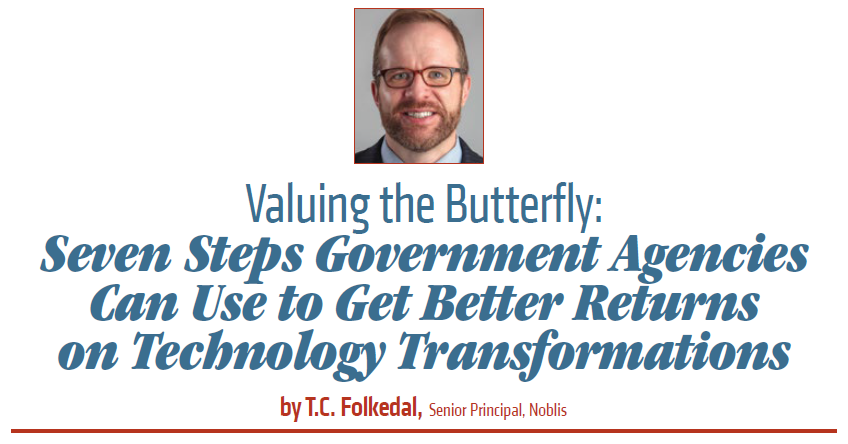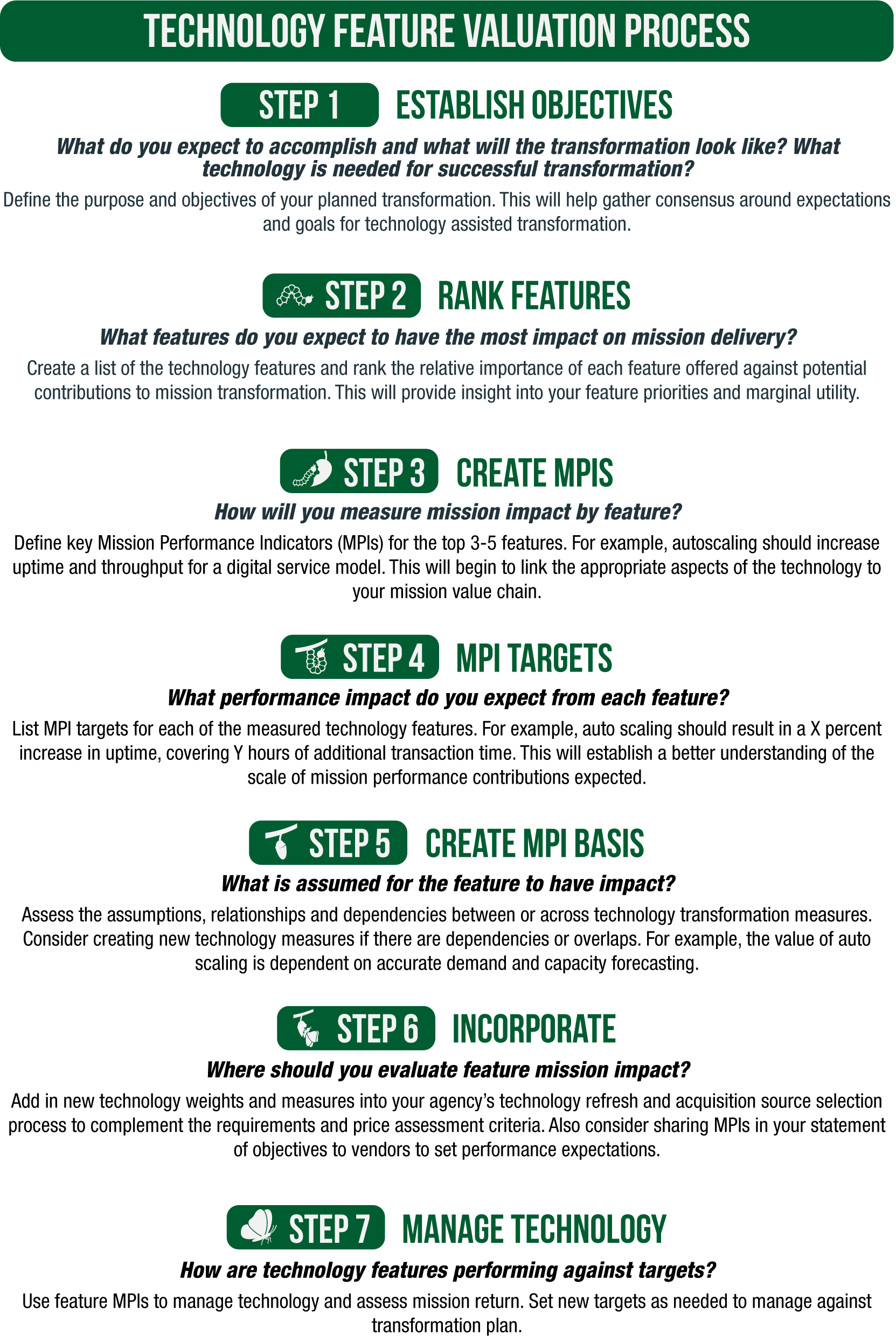
Valuing the Butterfly: Seven Steps Government Agencies Can Use to Get Better Returns on Technology Transformations
By T.C. Folkedal, Senior Principal, Noblis

A butterfly emerging from a chrysalis is often used as an example of transformation. Enterprise technology transformation is no less dramatic though its performance capability in a government agency is dependent on the ability to leverage the benefits of a new technology to take metaphorical flight in your organization.
Now more than ever, the right technology has the potential to transform government enterprises for the better.
A group of technology associations recently wrote a letter1 to Congress urging support for stimulus relief funding for IT modernization to enhance governments’ ability to “carry out coronavirus-related missions, maximize productivity, improve service delivery to citizens, and enhance cybersecurity protections for critical systems.” The group said, “Outdated government IT systems and processes already hinder some federal and state agencies’ ability to deliver aid to new applicants for small business loans and unemployment insurance.”
Many agencies have already successfully transitioned to digital platforms and realized significant cost savings and greater efficiency. Digital and cloud technology offer many benefits including rapid provisioning, scaling and integrated control. But just because a technology promises benefits and adoption is increasing, there is no guarantee that an agency will be more successful by virtualizing their operations.
To reap the benefits of the new digital environment, agencies will need to significantly change operations and software and be prepared to embrace opportunities for automation. Simply ‘lifting and shifting’ on-premise operations into a cloud virtual store and compute environment will not enable the scaling of services required to meet consumer demand or significantly reduce cost. To enjoy those benefits, the design, strategy and business logic for an online mission model will need to be significantly altered from hardware-based processes and operations.
To understand the potential benefits of a technology to your enterprise, it is worth considering your organization’s motivation for change. At a fundamental level, the incentive for transformation is often a response to perceived disruption and uncertainty. Indirect costs may be rising, budgets decreasing, legacy systems may be obsolete, and hardware-based operations may become less efficient and overloaded. Consolidation and savings are often cited as transformation goals. But they are not ends in themselves, nor do they fully describe what an organization hopes to achieve from enterprise transformation. A better measure of transformation is grounded in the understanding of how specific technology features would be expected to help an organization achieve strategic objectives and to ask, “What will consolidation and savings help your enterprise accomplish?”
Surprisingly, seeking to understand how technology can help your enterprise achieve planned outcomes is not a common practice. Government technology assessment approaches tend to focus on the ability of a technology vendor to meet technical requirements and the cost of delivering the technology. Both are valuable assessment criteria, but they do not illuminate how technology will mitigate risks or contribute to mission success. It could be argued that assessment against requirements should reflect needs against mission. The line of sight between design and mission outcomes is usually not clear which means that it is not easily measured or managed. You may end up getting a good price for specifications but gain no insight into how the technology will transform your enterprise or evolve service structures to meet your needs.
To address this valuation gap, an agency considering acquiring new technology will need to add a transformational perspective to their acquisition processes. This starts by re-thinking how enterprise technology is valued in your organization. For most technologies, some features will be more important than others relative to how you expect the technology to influence mission performance. For example, auto-scaling may be the most important feature for your enterprise if there is a lack of predictability in your demand cycle or as a result of the pandemic, your enterprise is critically over capacity.
To build out a new understanding of the link between potential technology and expected mission performance, you will need to follow a seven-step Feature Valuation Process.

By completing the Feature Valuation Process, a government agency will be able to not only compare features that are most relevant to transformational objectives during source selection, but also create linkages that can be used to manage technology and set clear expectations for assessment of contract performance after award. The graphic shown above highlights the reinforcing value links that will result in increased transparency and line of sight throughout the mission value chain.
Every enterprise transformation must be carefully planned, nurtured and managed to succeed. Digital technology offers significant promise for enterprises seeking to consolidate, save and effectively scale to meet demand for virtual services. To achieve transformation, an enterprise must embrace new technology assessment approaches that consider technology features potential contributions to mission outcomes.
Incorporating a technology feature valuation process and mission performance indicators into your enterprise technology evaluation and management process will help ensure that if and when we face another large-scale crisis or pandemic, you get the transformation you planned and don’t get stuck with just another technology caterpillar.

1 “Re: Support for IT Modernization to Improve COVID-19 Pandemic Response and Relief Efforts,” April, 15, 2020. https://www.itic.org/policy/ITIMultiassociationLettertoCongress_ITPrinciplesforFutureStimulus.pdf
T.C. Folkedal is a senior principal at Noblis, a leading provider of science, technology and strategy services to the federal government. He has over 25 years of experience advising government and commercial clients on valuation, mission delivery, investment management and resource optimization. His work has focused on providing analytic insight into the downstream impact of decisions to better inform strategic planning and enterprise transformation. Folkedal leads the Noblis Economic Analytics for Decision Support Center of Excellence focused on helping clients meet the challenge of upgrading enterprise services and reducing costs without cutting mission critical activities.
Click here to download the PDF version of this article.
This article was published in the Spring 2020 edition of PSC's Service Contractor Magazine.